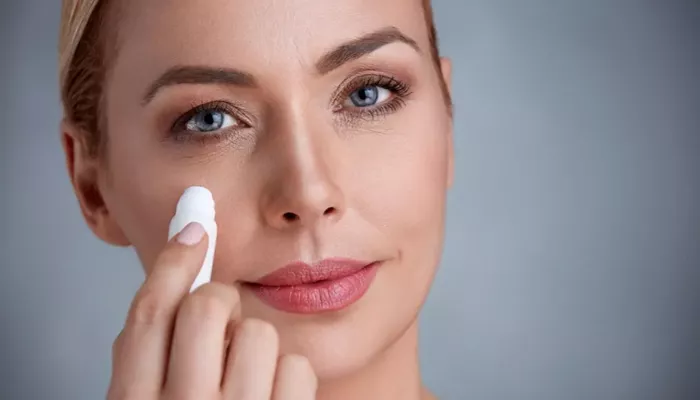Dark circles under the eyes are a common cosmetic concern that can affect individuals of all ages and backgrounds. These circles can give a tired, aged appearance and may be caused by various factors, including genetics, lack of sleep, aging, and environmental factors. While dark circles are primarily a cosmetic issue, they can sometimes indicate underlying health problems. This article explores the medical treatments available to reduce or eliminate dark circles, focusing on various methodologies, their effectiveness, and considerations for patients seeking these treatments.
Understanding Dark Circles
Causes of Dark Circles
Dark circles can arise from several causes:
Genetics: Family history plays a significant role in determining skin thickness and pigmentation around the eyes.
Aging: As we age, skin loses collagen and elasticity, leading to thinning skin that reveals underlying blood vessels.
Sleep Deprivation: Lack of sleep can cause the skin to appear paler, making dark circles more prominent.
Allergies: Allergic reactions can lead to inflammation and swelling, contributing to the appearance of dark circles.
Sun Exposure: UV rays can increase melanin production in the skin, leading to hyperpigmentation around the eyes.
Understanding these causes is crucial for selecting appropriate treatment options.
Medical Treatments for Dark Circles
A variety of medical treatments are available for addressing dark circles. The choice of treatment depends on the underlying cause and the individual’s unique skin characteristics.
1. Topical Treatments
Creams and Serums
Hydrating Creams: Products containing hyaluronic acid can help retain moisture and plump up the skin under the eyes.
Brightening Agents: Ingredients like vitamin C or kojic acid can lighten pigmentation and improve overall skin tone.
Retinoids
Retinoids promote collagen production and improve skin texture. They may help reduce pigmentation but should be used cautiously due to potential irritation.
2. Injectable Treatments
Dermal Fillers
Fillers such as hyaluronic acid can be injected into the under-eye area to restore volume and reduce the appearance of hollows that create shadows. This treatment is particularly effective for individuals with volume loss due to aging.
Platelet-Rich Plasma (PRP) Therapy
PRP therapy involves drawing a small amount of blood from the patient, processing it to concentrate the platelets, and injecting it into the under-eye area. This treatment promotes healing and collagen production, which can improve skin texture and color.
3. Laser Treatments
Fractional Laser Resurfacing
This technique uses laser energy to create microscopic wounds in the skin, stimulating collagen production and improving skin texture. It is effective for reducing pigmentation and tightening loose skin.
Pulsed Dye Laser
This laser targets blood vessels under the skin, reducing redness and improving overall skin tone. It is particularly useful for individuals whose dark circles are caused by visible blood vessels.
Q-Switched Laser
Effective for treating hyperpigmentation, this laser works by targeting melanin in the skin, helping to lighten dark circles caused by excess pigmentation3.
4. Surgical Options
Blepharoplasty
This surgical procedure involves removing excess fat or skin from the eyelids. It is suitable for individuals with significant puffiness or sagging around the eyes that contribute to dark circles.
Fat Grafting
In this procedure, fat is harvested from another part of the body and injected into the under-eye area to restore volume and reduce shadows.
Non-Invasive Treatments
In addition to surgical options, several non-invasive treatments can help diminish dark circles:
1. Radiofrequency Treatments
Pellevé
Pellevé uses radiofrequency energy to heat deep layers of skin, promoting collagen contraction and stimulating new collagen production over time.
ThermiRF
This technology involves controlled heating of tissue to tighten loose skin under the eyes while improving overall texture.
2. Chemical Peels
Chemical peels involve applying a solution that exfoliates the top layers of skin, promoting new cell growth and improving pigmentation issues associated with dark circles.
3. Lifestyle Modifications
While medical treatments can significantly improve dark circles, lifestyle changes can also play an essential role in prevention:
Adequate Sleep: Aim for 7-9 hours of quality sleep each night.
Hydration: Drink plenty of water to keep your skin hydrated.
Sun Protection: Use sunscreen daily to protect against UV damage.
Healthy Diet: A balanced diet rich in vitamins C and E can support skin health.
Allergy Management: Treat allergies promptly to reduce inflammation around the eyes.
Conclusion
Dark circles under the eyes can be effectively treated through various medical interventions ranging from topical treatments to surgical procedures. The choice of treatment should be tailored to individual needs based on the underlying causes of dark circles. Consulting with a qualified dermatologist or medical professional is essential for determining the most appropriate approach.
By combining medical treatments with lifestyle modifications, individuals can achieve significant improvements in their appearance and boost their confidence. As advancements in dermatology continue to evolve, new methods will likely emerge, offering even more options for those seeking relief from this common concern.
Related topic:
7 Best Home Remedies For Dark Circles
Can Drunk Elephant Eye Cream Remove Dark Circles?
How Does Alba Botanica Fast Fix For Dark Circles Work?


